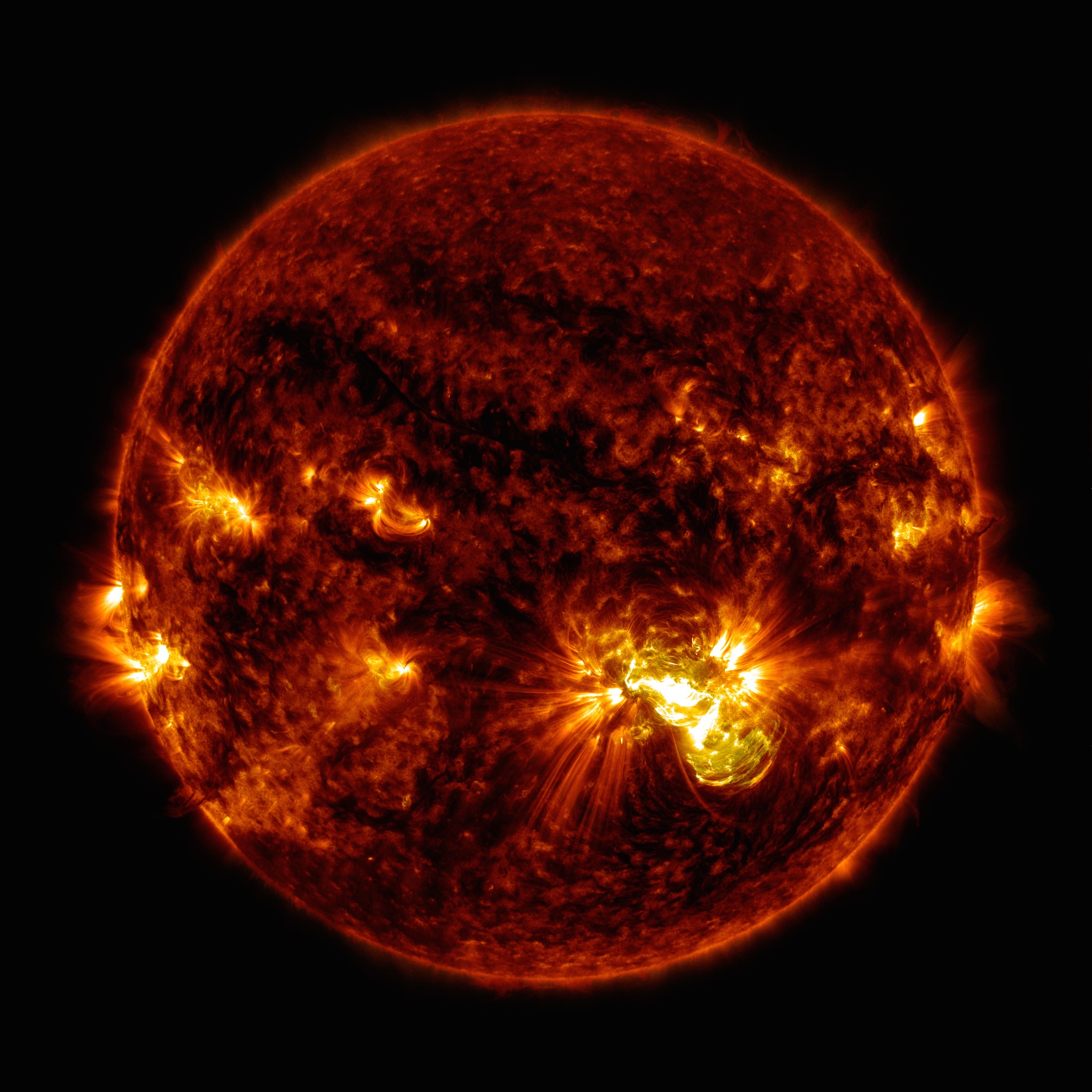Second Substantial Flare in Two Days

An active region on the sun erupted with a mid-level flare on Oct. 21, 2014, as seen in the bright light of this image captured by NASA's Solar Dynamics Observatory. This image shows extreme ultraviolet light that highlights the hot solar material in the sun's atmosphere.
Credit: NASA/GSFC/SDO
The sun emitted a mid-level solar flare, peaking at 9:59 p.m. EDT on Oct. 21, 2014. NASA's Solar Dynamics Observatory, which is always observing the sun, captured an image of the event. The same active region previously emitted an X1.1 solar flare on Oct. 19. Solar flares are powerful bursts of radiation. Harmful radiation from a flare cannot pass through Earth's atmosphere to physically affect humans on the ground, however -- when intense enough -- they can disturb the atmosphere in the layer where GPS and communications signals travel.
This flare is classified as an M 8.7-class flare.
M-class denotes flares that are a tenth as strong as X-class flares, which are the most intense flares. The number provides more information about its strength. An M2 is twice as intense as an M1, an M3 is three times as intense, etc.

An active region on the sun erupted with a mid-level flare on Oct. 21, 2014, as seen in the bright light of this image captured by NASA's Solar Dynamics Observatory. This image shows extreme ultraviolet light that highlights the hot solar material in the sun's atmosphere. Shown here with the Earth to scale.
Credit: NASA/GSFC/SDO

An active region on the sun erupted with a mid-level flare on Oct. 21, 2014, as seen in the bright light of this image captured by NASA's Solar Dynamics Observatory. This image shows extreme ultraviolet light that highlights the hot solar material in the sun's atmosphere.
Credit: NASA/GSFC/SDO

An active region on the sun erupted with a mid-level flare on Oct. 21, 2014, as seen in the bright light of this image captured by NASA's Solar Dynamics Observatory. This image shows extreme ultraviolet light that highlights the hot solar material in the sun's atmosphere.
Credit: NASA/GSFC/SDO

SDO AIA image of the M8.7 flare in 171 angstrom light from 2:09 UT on October 22, 2014.
Credit:NASA/SDO

SDO AIA image of the M8.7 flare in 304 angstrom light from 2:09 UT on October 22, 2014.
Credit:NASA/SDO

SDO AIA image of the M8.7 flare in 131 angstrom light from 2:09 UT on October 22, 2014.
Credit:NASA/SDO
Credits
Please give credit for this item to:
NASA's Goddard Space Flight Center. However, individual images should be credited as indicated above.
-
Producers
- Scott Wiessinger (USRA)
- Genna Duberstein (USRA)
-
Project support
- Aaron E. Lepsch (ADNET Systems, Inc.)
-
Writer
- Karen Fox (ADNET Systems, Inc.)
Release date
This page was originally published on Wednesday, October 22, 2014.
This page was last updated on Wednesday, May 3, 2023 at 1:50 PM EDT.
Missions
This visualization is related to the following missions:Series
This visualization can be found in the following series:Tapes
This visualization originally appeared on the following tapes:-
2014 Heliophysics Breaking News
(ID: 2014015)
Tuesday, December 30, 2014 at 5:00AM
Produced by - Robert Crippen (NASA)
